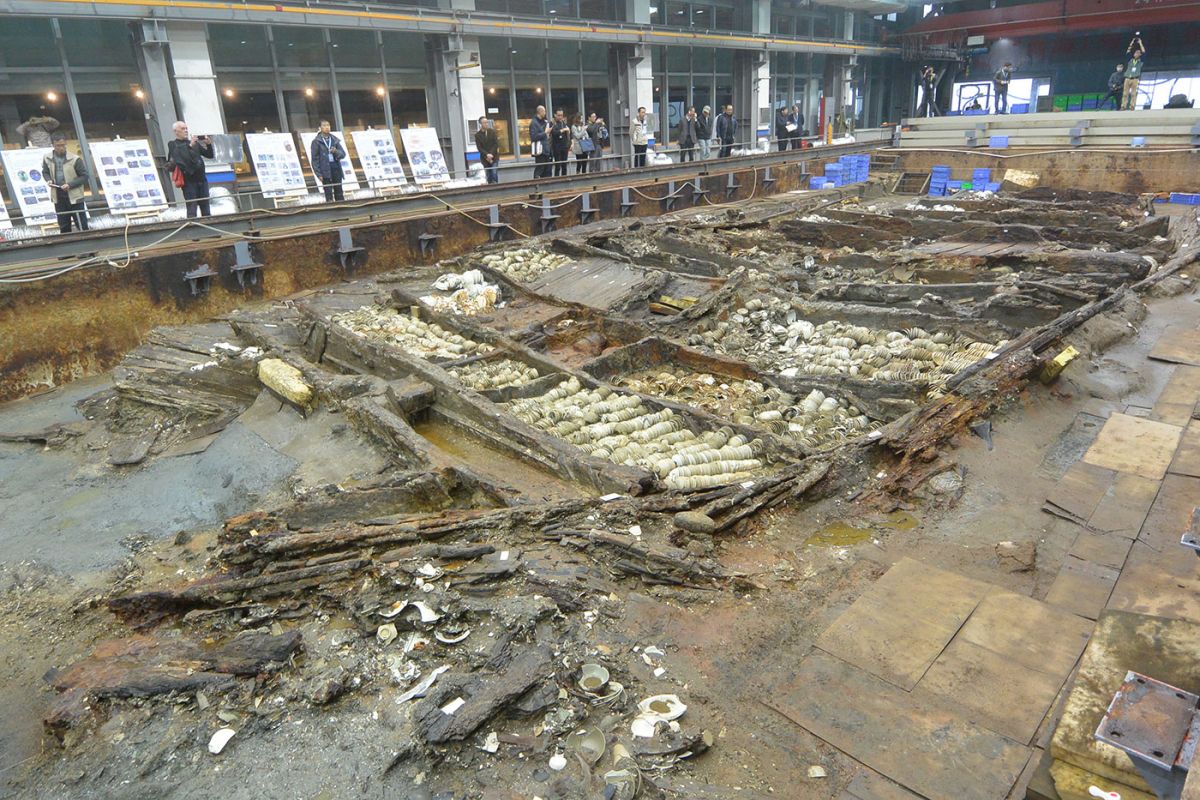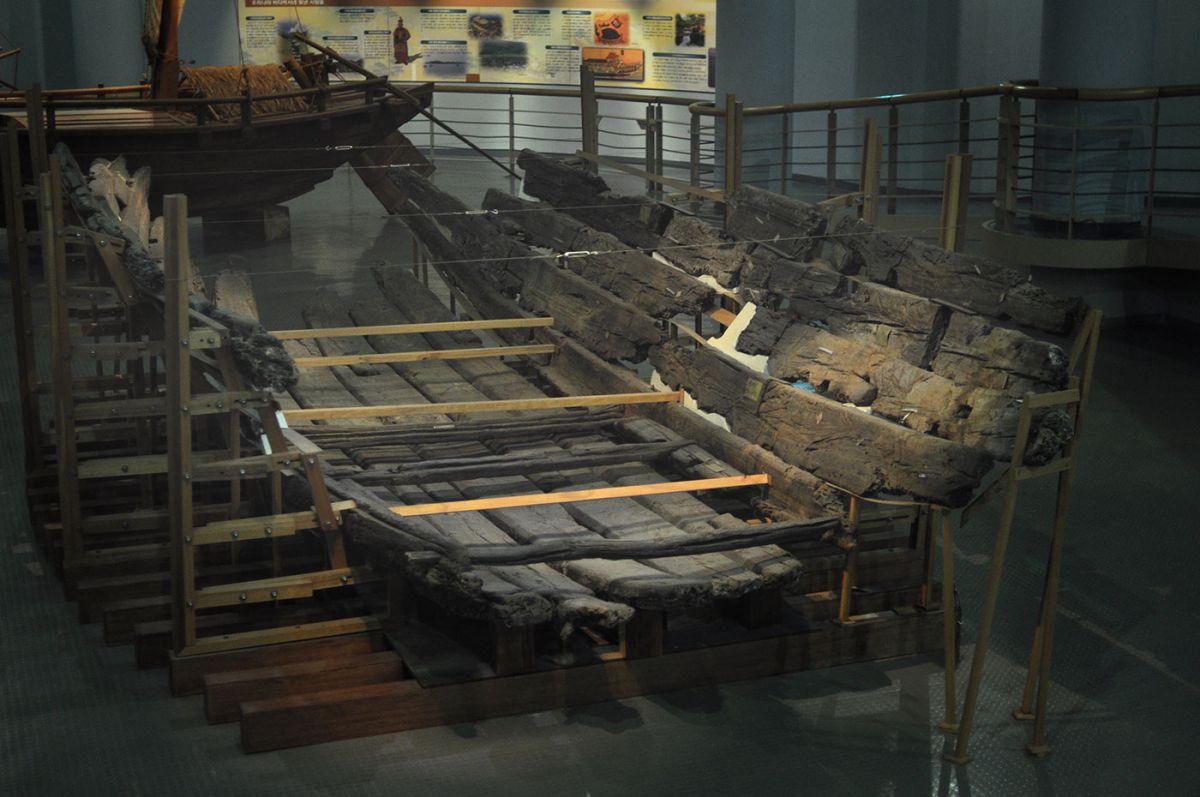Formation of an East Asian cultural, economic, and historic sphere through maritime interactions
The formation of maritime trading networks gradually developed in early Asian history and the subsequent integration of separate maritime entities contributed to the extensive growth of socio-economic and cultural development in the region. As a result, people and goods traveled long distances through these maritime networks among early polities in East and Southeast Asia.
The tributary system developed by the Chinese imperial courts was a channel for the exchange of commodities produced throughout the country, and is regarded as an early form of central government controlled trade. An example is the kingdom of Funan (68–550 CE), located at the tip of the Indochina Peninsula, and one of many entrepots located in the region. Funan sent homage to the Chinese court in the form of items such as pearls, coral, aromatic woods, spices, and precious goods from the Far West. Funan served as a shipping hub between the West and the East, which was confirmed by the discovery of Oc-Eo in the Mekong Delta, a site where Roman coins were once discovered during an archaeological investigation. Given the fact that land roads and sea routes for trade extended over vast regions, it is not surprising that scientists at Nara National Research Institute for Cultural Properties (in Japan) have found glass products from archaeological sites dated to the 5th century, which originated from the Roman Empire and the Indian Ocean territory.
Using both land and sea routes, long journeys were undertaken in order to acquire Buddhist scriptures and relics from within India, which were then spread rapidly, particularly during the Six Dynasties (222–589), Sui (589–618) and Tang (618–907). The accounts of Buddhists who traveled between China and India are a good resource for understanding the improvements to navigation and the water transportation system which were facilitated by pilgrimages aiming to spread doctrines. An account of an early pilgrimage was written by Faxian (337–442), who successfully reached the Gupta Empire in northern India in the fifth century and returned via sea routes to Ceylon, then onto China in 413. His account depicts how perilous a voyage crossing the South China Sea could be, when rudimentary navigational techniques were used, sailors were inadequately trained, and seagoing vessels poorly constructed. On the other hand, from a detailed account of a pilgrimage by Yiching (635–713), we learn that maritime transportation in the seventh century was much safer. Yiching embarked at Guangzhou in southern China for the Kingdom of Srivijaya, located in modern Palembang in eastern Sumatra, Indonesia in 671. He then traveled on a ship from Palembang to India, safely returning to Guangzhou in 695. The rise of the new maritime Kingdom of Srivijaya increased the traffic along sea lanes between Guangzhou and Palembang, and when travelling this route Yiching was probably aboard a Persian ship, on a trip that took him twenty days.
Persian and Arab sailors who had sophisticated navigation skills and knowledge about monsoons and tidal currents voyaged to Guangzhou by the late seventh century, with Guangzhou becoming a gateway of the Maritime Silk Route. This route linked China with the port cities of Southeast Asia and the Indian Ocean. The trade items that moved along the Maritime Silk Route varied, including not only silks but also other export goods such as ceramics, and consequently Chinese ceramics became a popular commodity in the Northeast Asian markets. At Korokan in Hakata in northern Kyushu in Japan, Chinese Changsha ceramics have been excavated, as well as Korean ceramics produced during the Unified Silla period (668–935). Hakata was a prominent international port during this time.
In the East Asian maritime world before the tenth century, Silla merchants dominated the trade along the northern Chinese coast and in the Yellow Sea. Silla occupied a geographically important position in the inter-regional maritime trading network, and Silla trading communities were additionally formed along the Chinese coast. The records of Silla merchants’ activities represent an early form of a private trading system, and they also began to be involved in transit trade. Jang Bogo (787–841) was the most powerful figure of the Silla cliques. His activities especially impacted on the amount of Silla trade with Japan, peaking around the ninth century. Jang Bogo regularly dispatched ships to Hakata, which at the time was the only Japanese port open to overseas traders. Silla-Japan trade, however, fell into decline after the death of Jang Bogo.
In China, the rise of the Song Dynasty (960–1279) was characterized by industrial development. The commercial revolution during the Song period coincided with the expansion of a monetized economy, which led to improvements of the taxation system. A significant portion of the Chinese socio-economy started to rely on taxation generated by maritime trading. The growth of maritime industries such as shipbuilding and water transportation was also accelerated. The greater engagement of Chinese voyagers in overseas trade had begun and would foster maritime commerce in East Asia. The Song period shipwrecks found in China are a testimony of this phenomena.
Jun Kimura, Junior Associate Professor, Department of Maritime Civilizations, Tokai University. junkimura@tsc.u-tokai.ac.jp

